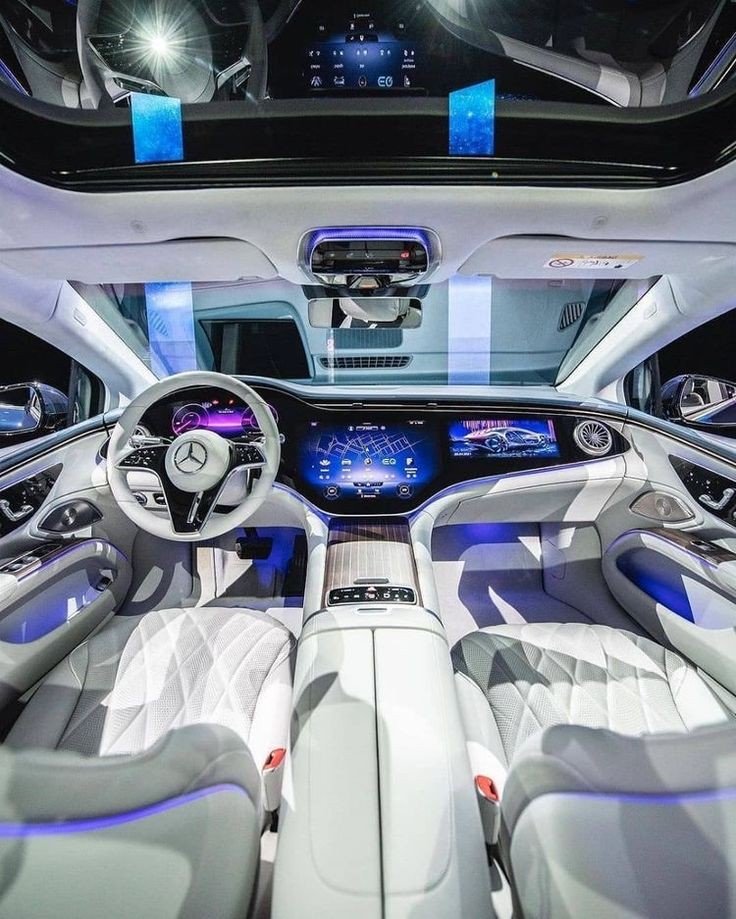
Autonomous driving, once a concept confined to the realms of science fiction, is rapidly becoming a reality. The evolution of self-driving cars has been driven by advances in technology, changes in societal needs, and a vision for a future where transportation is safer, more efficient, and accessible.
This detailed article explores the history, technology, challenges, benefits, and future prospects of autonomous driving, painting a comprehensive picture of this transformative innovation.
Historical Background
Early Concepts and Innovations
The idea of autonomous vehicles can be traced back to the early 20th century. In the 1920s and 1930s, radio-controlled cars were showcased as novelties, demonstrating the possibility of remote operation. However, these early attempts were rudimentary and far from the sophisticated systems we see today.
In the 1980s, significant strides were made with projects like Carnegie Mellon University’s Navlab and Mercedes-Benz’s VaMP. These early prototypes used computer vision, sensors, and basic AI to navigate environments, laying the groundwork for future developments.
The DARPA Challenges
The Defense Advanced Research Projects Agency (DARPA) played a pivotal role in advancing autonomous driving technology. The DARPA Grand Challenge in 2004, although resulting in no winners, highlighted the potential and challenges of autonomous vehicles. The subsequent 2005 and 2007 challenges saw remarkable improvements, with several vehicles successfully navigating complex courses. These competitions catalyzed research and development in autonomous driving, attracting significant attention and investment.
Technological Advancements
Sensors and Hardware
The backbone of autonomous driving technology is an array of sensors that provide a vehicle with the necessary data to understand and interact with its environment. Key sensors include:
- Lidar (Light Detection and Ranging): Uses laser pulses to create precise 3D maps of the environment.
- Radar: Provides long-range detection of objects and is effective in various weather conditions.
- Cameras: Capture visual information, aiding in object detection, recognition, and classification.
- Ultrasonic Sensors: Useful for short-range detection, particularly in parking scenarios.
- GPS and IMU (Inertial Measurement Unit): Provide accurate positioning and orientation data.
Software and AI
Autonomous vehicles rely heavily on sophisticated software and artificial intelligence (AI) to process sensor data and make driving decisions. Key components include:
- Perception: Algorithms that interpret sensor data to identify objects, pedestrians, road signs, and other vehicles.
- Localization and Mapping: Systems that determine the vehicle’s precise location and create maps of the surroundings.
- Path Planning: Algorithms that chart a safe and efficient route from the current position to the destination.
- Control: Systems that execute driving commands, such as steering, acceleration, and braking.
Machine learning, particularly deep learning, has been instrumental in enhancing the capabilities of autonomous driving software. Neural networks can learn from vast amounts of data, improving their ability to handle complex driving scenarios.
Communication Systems
Vehicle-to-Everything (V2X) communication is another critical technology for autonomous driving. V2X encompasses:
Vehicle-to-Vehicle (V2V): Communication between vehicles to share information about speed, position, and other critical data.
Vehicle-to-Infrastructure (V2I): Interaction with road infrastructure, such as traffic lights and road signs, to enhance navigation and safety.
Vehicle-to-Pedestrian (V2P): Communication with pedestrians to improve awareness and safety.
Levels of Autonomy
The Society of Automotive Engineers (SAE) defines six levels of driving automation, ranging from Level 0 (no automation) to Level 5 (full automation):
Level 0: No automation, the driver controls everything.
Level 1: Driver Assistance, such as adaptive cruise control or lane-keeping assist.
Level 2: Partial Automation, where the car can control both steering and acceleration/deceleration, but the driver must remain engaged.
Level 3: Conditional Automation, where the car can handle most driving tasks, but the driver must be ready to take over.
Level 4: High Automation, where the car can drive itself in most environments without human intervention, but there are some restrictions.
Level 5: Full Automation, where the car can drive itself in all conditions without any human input.
Current State of Autonomous Driving
Industry Players
Several companies are leading the charge in autonomous driving technology, each bringing unique approaches and innovations:
- Waymo: A subsidiary of Alphabet Inc. (Google), Waymo is widely regarded as a leader in autonomous driving. Its vehicles have logged millions of miles in testing, and it operates a commercial self-driving taxi service in select areas.
- Tesla: Known for its Autopilot and Full Self-Driving (FSD) systems, Tesla integrates advanced driver-assistance features in its electric vehicles, aiming for full autonomy.
- General Motors (Cruise): GM’s Cruise division focuses on developing fully autonomous vehicles and operates a pilot ride-hailing service.
- Uber and Lyft: Both companies have invested in autonomous driving technology to integrate self-driving cars into their ride-hailing fleets.
- Baidu: The Chinese tech giant is heavily involved in autonomous driving, with its Apollo project being a significant player in China.
Autonomous Features in Modern Vehicles
Many modern vehicles come equipped with advanced driver-assistance systems (ADAS), which are stepping stones toward full autonomy. These features include:
- Adaptive Cruise Control: Automatically adjusts speed to maintain a safe distance from the vehicle ahead.
- Lane Keeping Assist: Helps keep the vehicle centered in its lane.
- Automatic Emergency Braking: Detects imminent collisions and applies brakes to prevent or mitigate accidents.
- Parking Assist: Automates the parking process, including parallel and perpendicular parking.
Benefits of Autonomous Driving
Safety
One of the most significant potential benefits of autonomous driving is improved safety. Human error is a leading cause of traffic accidents, and autonomous vehicles have the potential to reduce or eliminate these errors. Autonomous systems do not get tired, distracted, or impaired, and they can react faster than humans.
Efficiency and Traffic Management
Autonomous vehicles can improve traffic flow and reduce congestion through better coordination and communication. Platooning, where vehicles travel closely together at high speeds, can reduce aerodynamic drag and improve fuel efficiency. Additionally, autonomous vehicles can optimize routes in real-time, avoiding traffic jams and reducing travel time.
Accessibility
Autonomous driving technology can provide greater mobility for individuals who cannot drive, such as the elderly, disabled, or visually impaired. Self-driving cars can offer these individuals greater independence and access to transportation.
Environmental Impact
Autonomous vehicles can contribute to environmental sustainability by optimizing driving patterns, reducing fuel consumption, and promoting the use of electric vehicles. Efficient driving reduces greenhouse gas emissions and minimizes the overall carbon footprint.
Challenges and Considerations
Technical Challenges
Developing fully autonomous vehicles that can handle all driving scenarios remains a formidable technical challenge. Edge cases, such as unusual weather conditions, unpredictable human behavior, and complex urban environments, require sophisticated AI and extensive testing.
Legal and Regulatory Issues
The legal and regulatory landscape for autonomous vehicles is still evolving. Governments need to establish clear regulations and standards for the deployment and operation of self-driving cars. Issues such as liability in case of accidents, data privacy, and cybersecurity must be addressed.
Ethical Dilemmas
Autonomous vehicles raise ethical questions, particularly in scenarios where accidents are unavoidable. Decisions about who or what to prioritize in an accident (e.g., passengers versus pedestrians) pose significant ethical dilemmas. Developers must consider these issues in the design and programming of autonomous systems.
Public Perception and Acceptance
Gaining public trust and acceptance is crucial for the widespread adoption of autonomous vehicles. High-profile accidents involving self-driving cars can undermine confidence, even if autonomous vehicles are statistically safer than human-driven ones. Transparent communication, safety assurances, and education are vital to building public trust.
Future Prospects
Advances in AI and Machine Learning
Continuous advancements in AI and machine learning will enhance the capabilities of autonomous driving systems. Improved perception algorithms, better decision-making processes, and more robust control systems will address many of the current technical challenges.
Integration with Smart Cities
Autonomous vehicles will play a crucial role in the development of smart cities. Integration with intelligent transportation systems, traffic management, and urban planning will optimize mobility and reduce congestion. V2X communication will enable seamless interaction between vehicles and city infrastructure.
Shared Mobility and Autonomous Fleets
The combination of autonomous driving and shared mobility has the potential to revolutionize transportation. Autonomous ride-hailing services, self-driving taxis, and shared autonomous vehicles can reduce the need for personal car ownership, decrease traffic congestion, and lower transportation costs.
Environmental Sustainability
As autonomous vehicles become more prevalent, their integration with electric powertrains and renewable energy sources will further enhance environmental sustainability. Autonomous electric vehicles can contribute to a reduction in greenhouse gas emissions and promote the use of clean energy.
The evolution of self-driving cars represents a monumental shift in the transportation landscape. Autonomous driving technology promises to enhance safety, improve efficiency, and provide greater accessibility. Despite the numerous challenges, the progress made thus far is remarkable, and the future prospects are promising.
The journey toward full autonomy is ongoing, with continuous advancements in technology, regulatory frameworks, and public acceptance. As we move closer to realizing the vision of fully autonomous vehicles, the impact on society, the economy, and the environment will be profound. The evolution of self-driving cars is not just about technology; it is about transforming the way we move, live, and interact with our world.
ALSO READ: Volkswagen and QuantumScape Revolutionize EV Market







